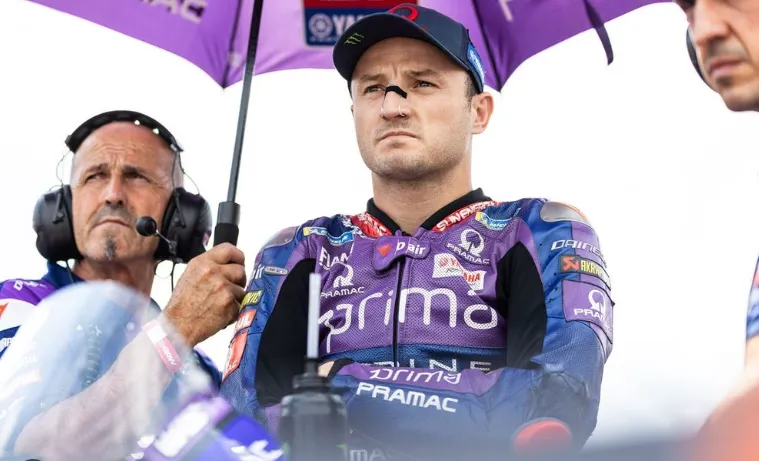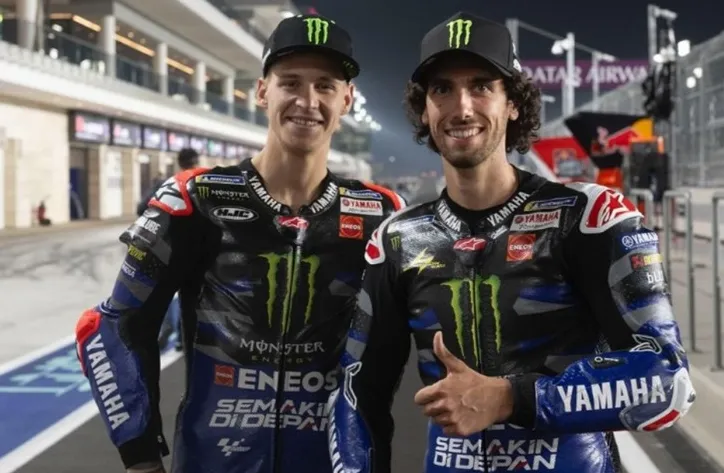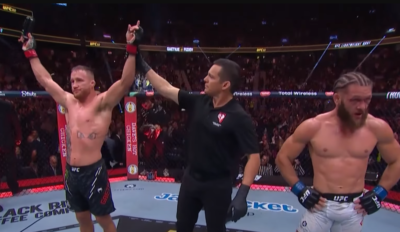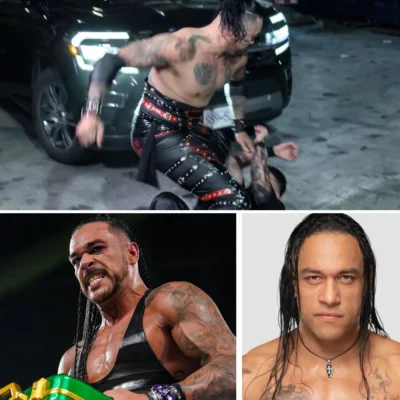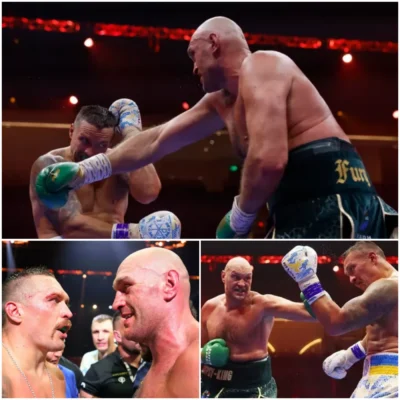
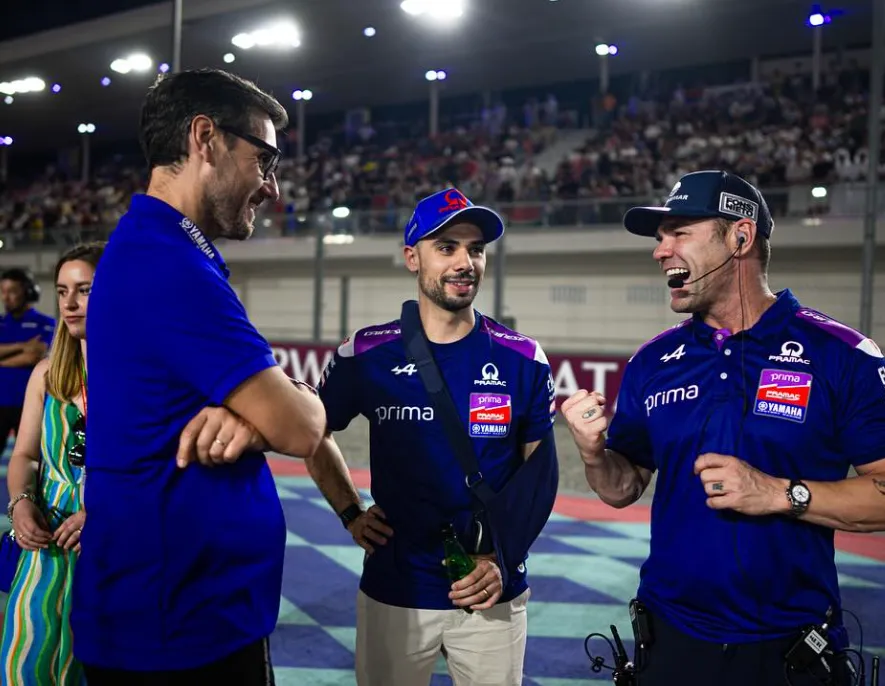
Can’t Rush: Miguel Oliveira Reveals Recovery Journey After Mysterious Injury – Pramac Yamaha What Will Happen Next?
Miguel Oliveira’s journey in the 2025 MotoGP season has taken an unexpected and frustrating turn. The Pramac Yamaha rider, known for his technical brilliance and fearless aggression on the track, is currently battling a “super rare” injury that has not only sidelined him but also cast doubt over his short-term future in the sport. While the MotoGP paddock continues to charge ahead, Oliveira finds himself in a race of a different kind—one that requires patience, persistence, and careful medical attention.
As Oliveira continues his road to recovery, the pressing question looms: Will he return at full strength in time for Jerez, or will this mystery injury derail his entire 2025 campaign? Let’s dive into the details of the injury, his current progress, and what lies ahead for the Portuguese rider and Pramac Yamaha.
A freak collision leads to a serious setback
The drama began during the Argentina Sprint Race, where a collision with MotoGP newcomer Fermin Aldeguer led to an unexpected and damaging crash. Oliveira was quick to highlight that the crash felt severe right from the start, even though early hospital reports did not show any fractures.
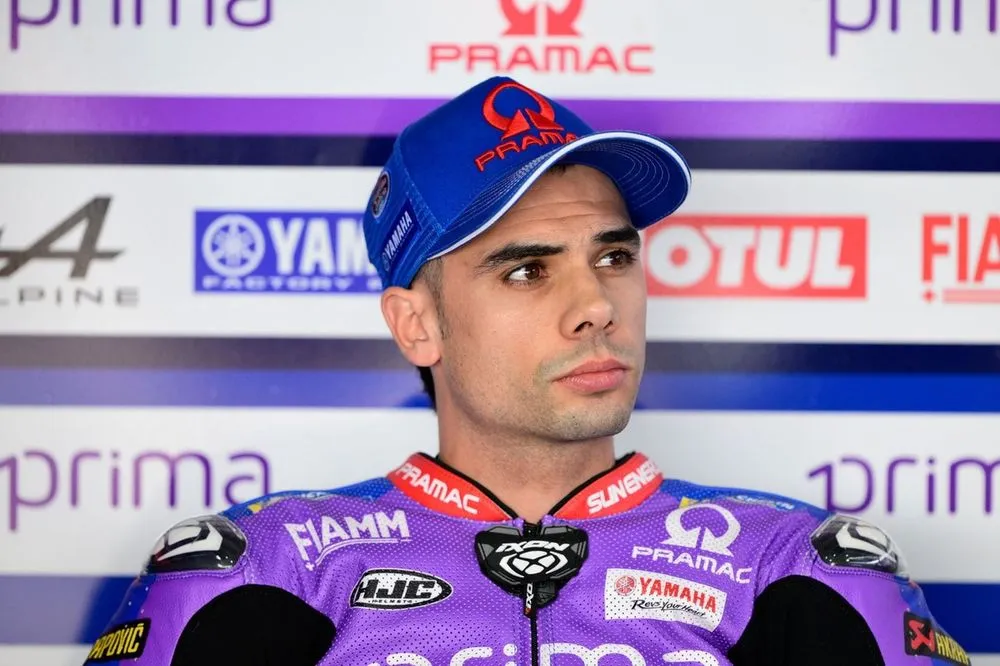
Initially, Oliveira underwent a series of scans—CT, X-rays, and preliminary physical evaluations—which came back inconclusive. The early assumption was that he may have narrowly avoided serious damage, possibly a broken collarbone at most. However, what followed next shocked everyone.
During a routine examination, a nurse unintentionally repositioned his right shoulder, producing a clicking sound. Oliveira feared the worst, convinced the bone had fractured, but subsequent imaging revealed something much more unusual—a dislocated sternoclavicular joint with torn ligaments, a combination rarely seen in high-speed motorcycle racing.
The hidden complexity of Oliveira’s injury
According to Oliveira, the injury involves the sternum and collarbone joint, a region that doesn’t usually get much attention in motorsport injuries. He said, “It was a lot more serious than I expected. It’s a rare injury. I was surprised—it’s not something you hear about often in MotoGP.”
What made the injury more complicated was the initial invisibility on scans. Only later, after MRI imaging and further orthopedic consultation, did it become clear that there was full ligament separation and significant misalignment of the joint.
This type of injury doesn’t follow the conventional recovery trajectory of common racing injuries like wrist fractures or shoulder dislocations. Ligament regeneration is slow and unpredictable. The muscles and tendons surrounding the clavicle and sternum must realign and stabilize, and scar tissue must form to create lasting support. In other words, this wasn’t going to be a three-week absence with a quick return to the paddock.
“No shortcuts”: Miguel Oliveira’s mindset during recovery
From the outset, Oliveira made it clear he wasn’t going to take risks by pushing for an early return. “There’s no way to speed up tendon regeneration or scar tissue development. Less is more at this stage,” he explained during a media session at the Qatar Formula 1 Grand Prix, where he made a public appearance despite still wearing a shoulder sling.
He acknowledged that he still suffers from symptoms associated with “frozen shoulder”, a condition that results from prolonged immobility and tightness in the shoulder capsule. While his pain has subsided significantly, functional recovery remains an uphill battle. “I was completely immobilized for the first three weeks. Now it’s more about stiffness than sharp pain,” Oliveira said.
What’s notable here is Oliveira’s mental discipline. Despite the pressure of missing valuable development time on the new M1 bike and being unable to contribute to Pramac Yamaha’s season, he refuses to sacrifice long-term health for short-term gain. He emphasized that a half-fit rider can be more dangerous than a fully absent one, especially at the level of MotoGP where physical condition and timing must be razor sharp.
Pramac Yamaha and the M1 adaptation delay
The timing of this injury couldn’t have been worse. Oliveira was just beginning to get familiar with the Yamaha M1, a machine that requires a unique riding style and precise balance to extract performance. Unlike the KTM and Aprilia bikes Oliveira has previously ridden, the M1 demands high corner speed and smooth throttle input—a different rhythm that needs time to master.
Missing three consecutive Grands Prix—Argentina, the United States, and potentially Jerez—means Oliveira is being deprived of that essential learning curve and feedback loop that makes the difference between a competitive rider and a struggling one.
The Pramac Yamaha team has expressed support, with insiders suggesting that the team understands the sensitive nature of Oliveira’s condition. However, in a sport as fast-paced and competitive as MotoGP, extended absences often come with their own consequences, especially when other riders are making progress on the same machinery.
Is Jerez realistic—or too soon?
Oliveira’s return for the Spanish Grand Prix in Jerez remains uncertain. While he initially hoped to make a comeback in time for the Spanish round, he was also quick to admit that pushing too early could be a step backward rather than forward.
He’s scheduled to undergo another MRI early next week to assess whether he can begin making shoulder movements beyond 90 degrees, which is essential for controlling the bike under braking and cornering stress. “That movement—raising the scapula and collarbone—is the one that tells us if I can get back to full training,” he explained.
Should the MRI show positive signs of ligament healing and joint stability, Oliveira may begin light gym work and simulator training. However, if there are still signs of instability, he may be forced to delay his return until after Jerez, possibly targeting the French or Italian Grand Prix instead.
Will Oliveira’s MotoGP future be affected?
This incident adds another chapter to Miguel Oliveira’s injury-marred MotoGP timeline. Since the start of 2023, he has now missed 12 Grands Prix due to injury, a staggering number that highlights just how unlucky—and perhaps overexposed—he has been in recent seasons.

While Oliveira’s talent is unquestioned, team managers and sponsors often evaluate durability as much as skill. With MotoGP seats always in demand and factory-backed rides under constant scrutiny, repeated injuries may start to raise questions about long-term investment.
That said, Oliveira remains focused on the now, emphasizing that his goal is to return at 100% fitness, not just for one race but for the remainder of the season.
What lies ahead: A cautious but determined comeback
For now, the road ahead is filled with medical scans, light rehab work, and a watchful eye on physical responses. Oliveira has the experience and maturity to understand the risks of premature comebacks, and it’s clear that he’s working closely with his medical team to make data-driven decisions about each phase of his return.
His fans continue to support him across social media, and the MotoGP community largely agrees that his absence has been felt. The sport is richer when a rider of Oliveira’s caliber is on the grid—calculated, creative, and always capable of surprising results.
Final thoughts: The price of rare injuries in elite motorsport
In a sport where milliseconds and millimeters separate victory from disaster, injuries like Oliveira’s are a stark reminder of the fragility of even the most elite athletes. His dislocated sternoclavicular joint may be rare, but it underscores a common truth: that resilience, not recklessness, is what sustains long careers in MotoGP.
As fans eagerly await updates from his next MRI and fitness tests, one thing is certain—Miguel Oliveira is not done yet. The road back may be longer than expected, but with his mindset, support system, and clinical understanding of recovery, he has everything needed to make a strong and smart return.








